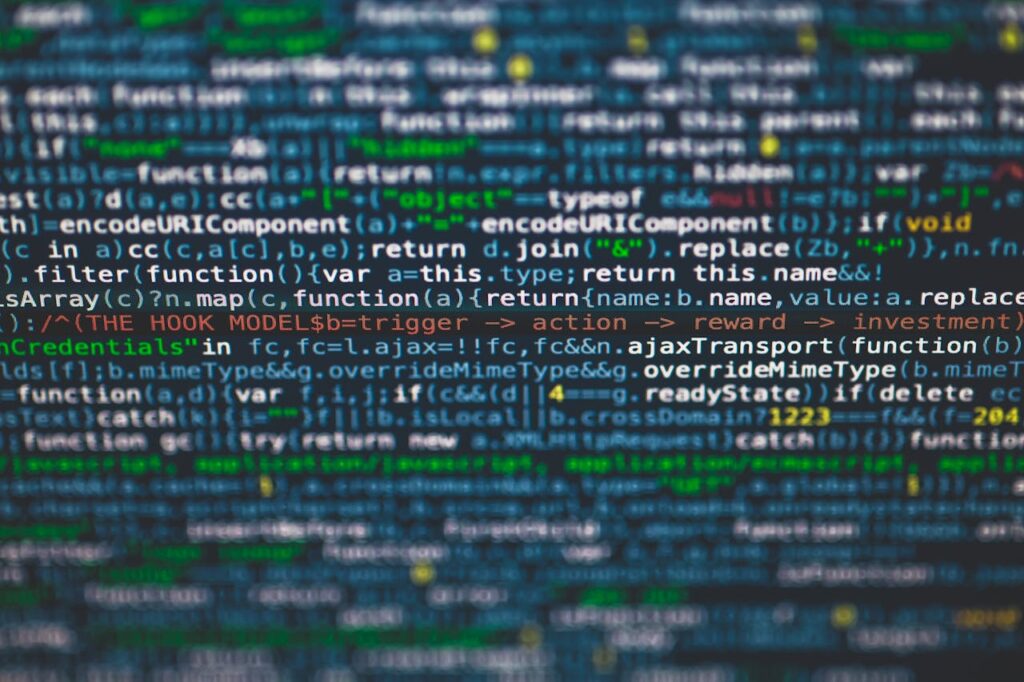Scientists Have Discovered a New Way to Count (And It’s Actually Really Important)

Counting comes so naturally to us that we barely notice we are doing it. A glance at a table of coffee cups, a row of books, or a handful of coins, and our brains instantly know what is there and what is new. For computers, that simple act is anything but simple.
This challenge is more than a quirky programming problem. It shapes how technology works all around us, from tracking trends across billions of social media posts to piecing together the code of life hidden in genetic sequences. At the heart of it lies a deceptively tricky question: out of everything a system sees, how many are truly unique?
Now, scientists have introduced an algorithm so straightforward it is being called elegant. And despite its simplicity, it is already changing the way machines learn to count the world around them.
The Hidden Challenge Behind a Simple Count
We live in a world run by computers, yet there are things they still stumble over—things our minds do without a second thought. One of them is knowing how many truly unique items exist in a set. For us, spotting duplicates and recognizing something new is almost automatic. For a computer, that simple act has a name: the Distinct Elements Problem. And when the data stream holds billions or even trillions of elements, that “simple act” becomes a mountain to climb.

This is not just an academic exercise. It is the backbone of real systems we use every day. Social media platforms like Facebook and X depend on it to count unique active users. Banks rely on it to detect fraud, scanning millions of transactions to catch patterns that do not belong. In bioinformatics, scientists lean on it to sift through massive genomic datasets and spot rare genetic markers.
For years, the go-to solution was hashing-based algorithms. These methods shrink the data to save memory, but their accuracy lives and dies by the quality of the hash functions they use. As Vinodchandran Variyam, professor at the University of Nebraska–Lincoln and co-creator of the CVM algorithm, explained, “Earlier known algorithms all were ‘hashing based,’ and the quality of that algorithm depended on the quality of hash functions that algorithm chooses.”
The dependence on hashing meant limitations—in speed, in memory efficiency, in the ability to process data in real time. The field needed something better, something lighter that could keep up with the tidal wave of modern data.
That shift came in 2023 with the CVM algorithm, named for its creators Chakraborty, Variyam, and Meel. Instead of leaning on heavy hashing, CVM uses probabilistic sampling to estimate the number of distinct elements with striking accuracy, while using only a fraction of the memory. Its design is so clear and efficient that Donald Knuth himself praised it as beautifully simple and predicted it will become a staple in computer science education.
When “Counting” Isn’t Just Counting
In computer science, there is a problem so simple you could explain it in one sentence—yet solving it at scale has challenged researchers for decades. It is called the Distinct Elements Problem, or F₀ estimation, and it asks: How many unique items are in a data stream?
The idea sounds straightforward, but when that stream grows to millions or billions of elements, the challenge explodes. Unlike us, computers cannot just “remember” what they have seen unless they either store every element—which can be impossible—or use clever strategies to estimate the count without keeping it all in memory.
One example used by the CVM algorithm’s creators makes the difficulty clear. Imagine counting the number of unique words in Shakespeare’s Hamlet using a system that can only store 100 words at a time. You record the first 100 unique words you encounter. Once your memory is full, you randomly remove some—maybe flipping a coin to decide what stays. As you read on, this cycle repeats, each round adjusting the probability that a word is retained. In the end, the small sample you keep becomes a probabilistic snapshot, one that allows you to estimate the total number of unique words without ever storing the entire play.
This example mirrors the reality for massive modern datasets—real-time social media posts, global financial transactions, or streams of genomic data. Storing it all is out of the question, so researchers have spent decades developing algorithms that can work in a fraction of the space without sacrificing too much accuracy.
By the time the CVM algorithm appeared, the Distinct Elements Problem had already been studied for more than forty years. To deliver a solution that is both mathematically elegant and practically useful was not just a step forward—it was a bridge between theory and real-world application.
CVM: Counting Smarter, Not Harder
When Sourav Chakraborty, N. V. Vinodchandran, and Kuldeep Meel introduced the CVM algorithm, they did more than refine a formula—they changed how the Distinct Elements Problem could be solved. Where older methods leaned heavily on intricate hash functions, CVM took a simpler, cleaner path: probability. The result is an approach that is easier to implement, far more memory-efficient, and surprisingly accurate.
At its core, CVM keeps only a small, rotating sample of the data stream, updating it with a process that balances precision and space. Every new element in the stream is considered for inclusion in a limited buffer of stored items. When the buffer is full, some elements are randomly removed, often decided by coin flips, and replaced with new ones. The algorithm keeps track of how many thinning rounds occur, adjusting the probability that each element stays in the buffer. Once the stream ends, the elements still in the buffer form a probabilistic snapshot. Mathematical scaling then turns this snapshot into an accurate estimate of the total number of unique items.
This design removes the burden of creating perfect hash functions and operates on polylogarithmic memory—small enough to handle high-speed, massive data streams without breaking stride. In one demonstration, a system that could store only 100 unique words at a time estimated that Hamlet contained 3,904 distinct words. The actual count was 3,967. For a method using such minimal resources, that accuracy is striking.

CVM’s strength lies in its balance. It is simple enough to teach in a classroom, efficient enough for real-world systems, and versatile enough to handle everything from tracking social media activity to detecting financial fraud or scanning genomic data. In a field that often equates complexity with progress, CVM proves that sometimes the smartest solution is also the simplest.
Where CVM Changes the Game
The CVM algorithm is not just a theoretical breakthrough. It is already proving its worth in industries where massive data streams must be analyzed in real time. By lowering memory requirements and simplifying computation, CVM makes it possible to process more information, faster, and at a lower cost.
- Network traffic monitoring and cybersecurity
Modern digital networks move billions of data packets every day. Distinguishing unique connections or traffic flows is critical for spotting intrusions, denial of service events, and sudden spikes. Traditional algorithms often choke on memory limits at this scale, but CVM’s lightweight sampling allows real-time monitoring without overloading systems. - Fraud detection and financial transactions
Banks and payment platforms need to track unique transaction identifiers as they happen to stop suspicious activity or repeated attempts. CVM makes it possible to estimate distinct elements on the fly, supporting continuous analytics without storing mountains of transaction data. This reduces both latency and infrastructure demands. - Bioinformatics and genomic analysis
High-throughput DNA sequencing produces millions of short reads, and counting unique sequences is essential for identifying variants and studying microbial diversity. CVM’s probabilistic sampling lets researchers work with these massive streams efficiently, even when storing every single sequence is impossible. - Natural language processing and text mining
Whether for search engines or AI models, counting unique words or tokens is a core task in language modeling and indexing. CVM makes it possible to analyze enormous text streams—from social media chatter to academic databases—without keeping every piece of data in memory, enabling faster results with fewer resources. - Streaming data platforms and IoT analytics
The constant flow from smart devices, connected cities, and cloud services demands fast, scalable processing. CVM fits naturally into systems like Apache Flink, Kafka, and Spark, where low memory use and rapid computation keep real-time analytics running smoothly.
By integrating CVM into these workflows, organizations can handle larger volumes of data at lower cost, unlocking insights that once felt out of reach.
Innovation, Resilience, and the Power to Choose
The CVM algorithm may live in the world of computer science, but the principle behind it speaks directly to the human experience. At its core, CVM takes a complex, overwhelming stream of information and finds a way to process it with clarity and efficiency. Isn’t that what we’re all trying to do in life? Every day, we’re flooded with choices, distractions, and challenges. The difference between feeling lost and moving forward often comes down to how we filter, prioritize, and act.

Resilience is not about storing every moment or carrying every burden as it’s about knowing what matters, keeping it close, and letting go of what slows us down. Adaptability is about finding new ways to see old problems, just as CVM reimagined a decades-old computing challenge. When we embrace innovation—whether it’s in technology, in our mindset, or in our daily habits—we give ourselves the power to make better decisions. We stop reacting blindly and start moving with intention.
The lesson is simple but powerful: progress comes when we dare to think differently, to try a new approach when the old one no longer serves us. Just as CVM has changed how machines handle complexity, we can change how we handle life—by working smarter, not harder, and by trusting that the right adjustments today will shape the future we want tomorrow.
Loading...

